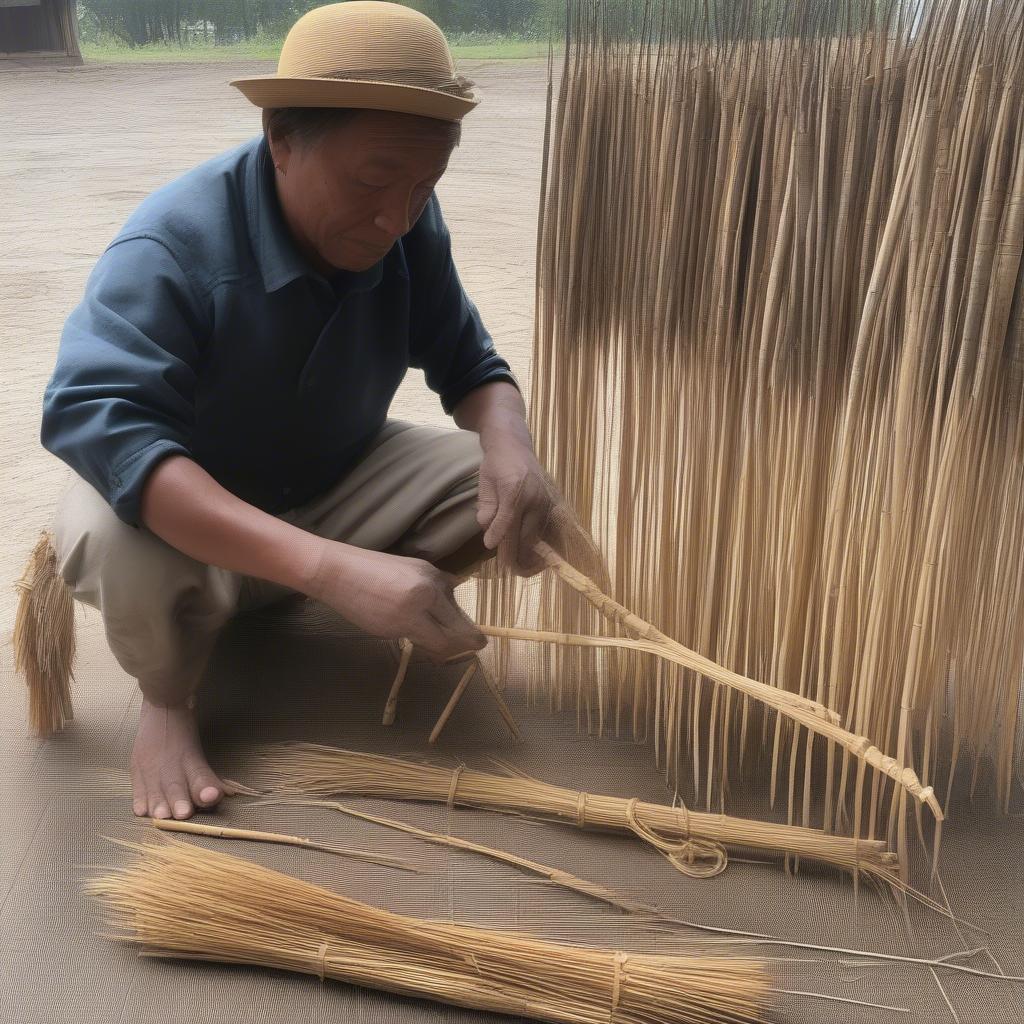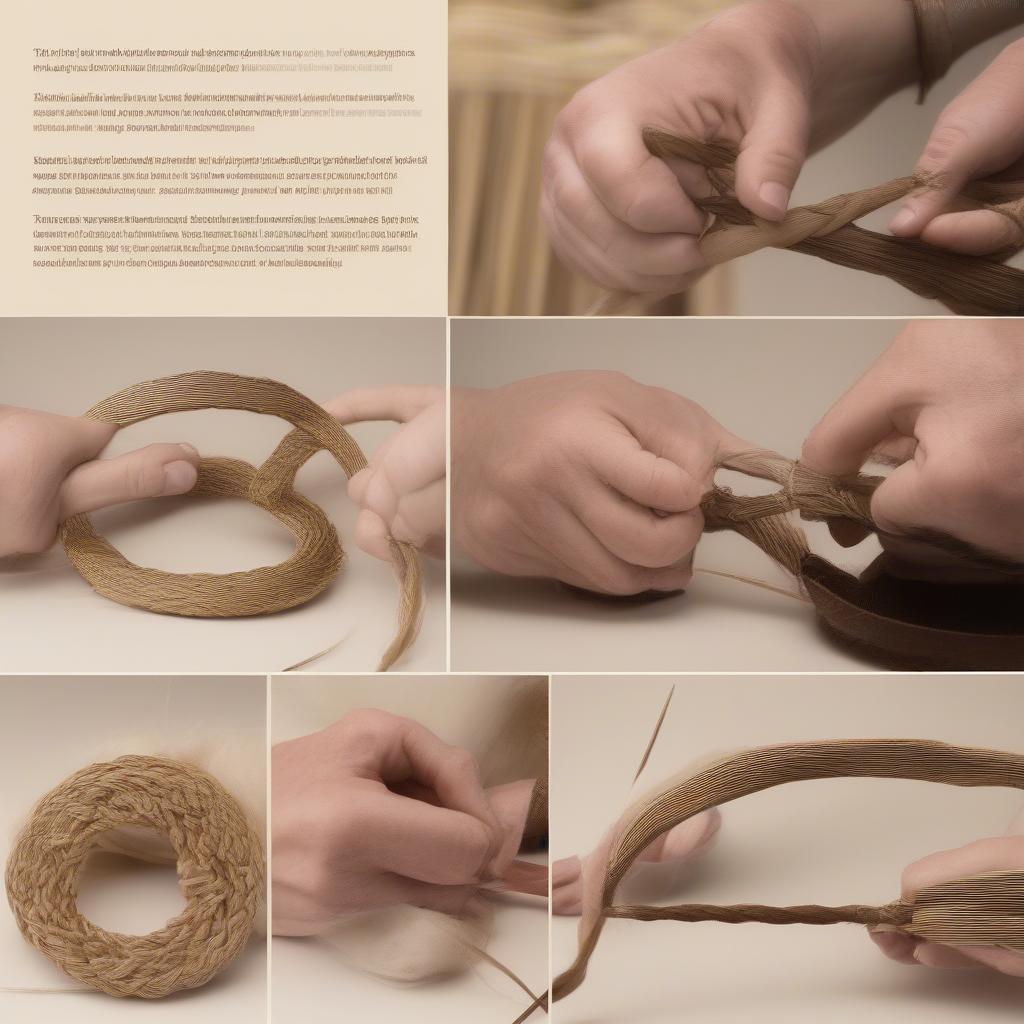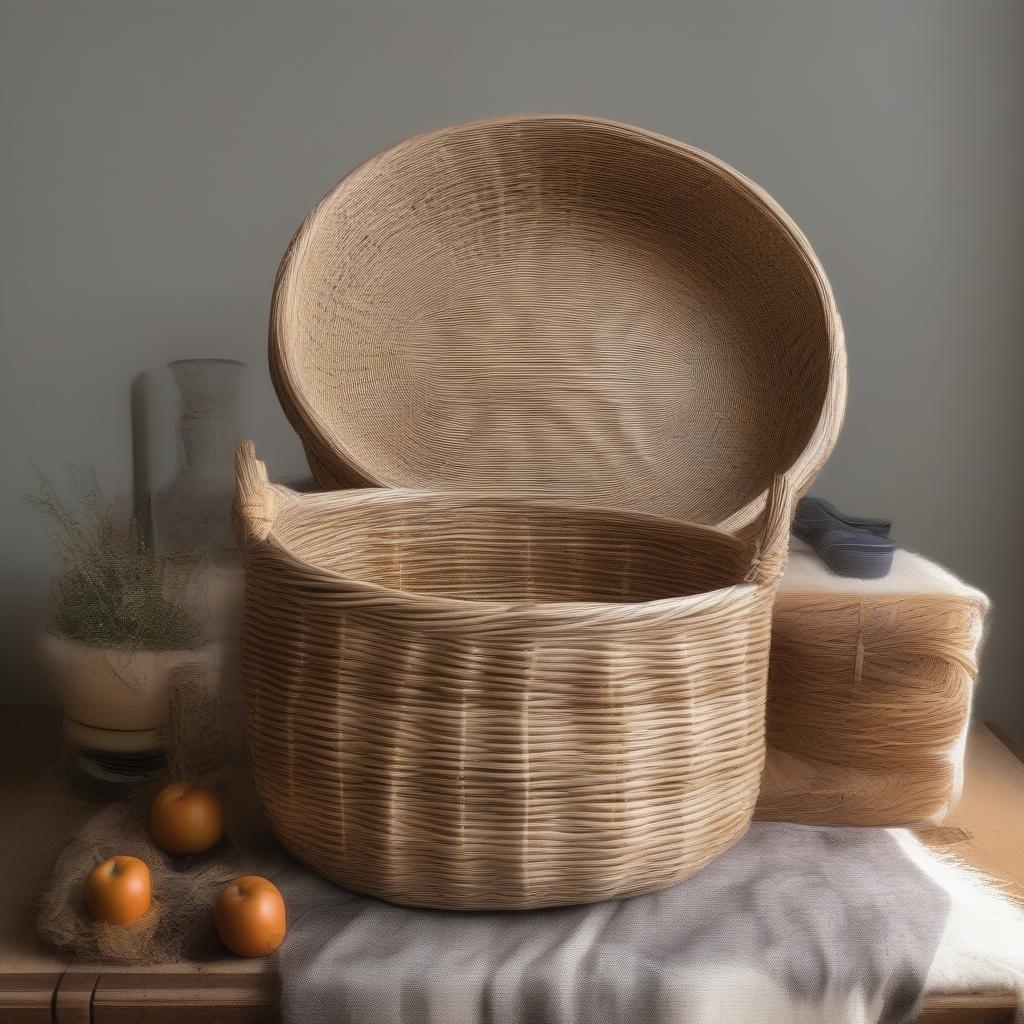Basket Weaving
Weaving Horse Reeds into Baskets: A Comprehensive Guide
Weaving Horse Reeds Into Baskets is a time-honored craft that combines artistry and practicality. From selecting the right reeds to mastering essential weaving techniques, this guide delves into the intricacies of creating beautiful and durable baskets from horse reeds.
Understanding Horse Reeds for Basket Weaving
Horse reeds, also known as Equisetum hyemale, are a unique and versatile material for basketry. Their hollow, segmented structure provides both strength and flexibility, making them ideal for creating a variety of basket shapes and sizes. Before you begin weaving horse reeds into baskets, it’s crucial to understand their properties and how to prepare them for weaving. This involves harvesting, drying, and soaking the reeds to achieve the desired pliability. Proper preparation ensures a smooth weaving process and a finished product that will stand the test of time.
 Preparing Horse Reeds for Basket Weaving
Preparing Horse Reeds for Basket Weaving
Selecting and Preparing Horse Reeds
Choosing high-quality horse reeds is the first step towards creating a beautiful basket. Look for reeds that are straight, uniform in size, and free from blemishes. Once you’ve selected your reeds, the preparation process involves several key steps: harvesting at the right time of year, drying thoroughly, and soaking the reeds in water before weaving. This process softens the reeds and makes them easier to manipulate, preventing breakage during the weaving process.
Basic Weaving Techniques with Horse Reeds
There are various weaving techniques you can employ when working with horse reeds, each offering a unique aesthetic and structural integrity. The most common techniques include:
- Plaiting: This involves interlacing three or more strands of horse reeds to create a flat, woven surface.
- Twining: This technique uses two active weavers that are twisted around a passive structural element, creating a strong and textured surface.
- Coiling: This method involves wrapping a continuous bundle of horse reeds around a foundation, resulting in a sturdy and often decorative basket.
 Different Weaving Techniques with Horse Reeds
Different Weaving Techniques with Horse Reeds
Mastering the Randing Technique
Randing is a crucial technique used in many basket weaving traditions, especially when working with horse reeds. It involves securing the base of the basket and providing a foundation for the weaving process. This involves weaving a sturdy base using a combination of plaiting and twining, which forms a stable platform for the rest of the basket. A well-executed rand ensures the durability and longevity of the finished product.
Creating Your First Horse Reed Basket
Now that you’ve learned the basics, it’s time to put your knowledge into practice. Start with a simple project, such as a small, round basket. This will allow you to familiarize yourself with the materials and techniques before moving on to more complex designs. Remember to soak your reeds thoroughly before starting, and take your time as you learn the rhythm of the weave.
 A Completed Horse Reed Basket
A Completed Horse Reed Basket
As Sarah Miller, a renowned basket weaver from Michigan, says, “The beauty of horse reed basket weaving lies in its simplicity. With practice and patience, anyone can create beautiful and functional pieces.” Remember to practice regularly and don’t be discouraged by mistakes. Each basket you create will enhance your skills and deepen your appreciation for this ancient craft. Weaving horse reeds into baskets offers a connection to nature and a sense of accomplishment.
In conclusion, weaving horse reeds into baskets is a rewarding craft that blends traditional techniques with creative expression. By understanding the properties of horse reeds, mastering essential weaving techniques, and practicing regularly, you can create beautiful and durable baskets. Explore the versatility of horse reeds and discover the joy of transforming natural materials into functional art.
FAQ: Weaving Horse Reeds into Baskets
- Where can I find horse reeds for basket weaving? You can find horse reeds from craft supply stores, online retailers, or even harvest them yourself if you have access to a sustainable source.
- How long do horse reed baskets last? With proper care, horse reed baskets can last for many years.
- What are the best tools for weaving horse reeds? Essential tools include a sharp knife or pruning shears, a soaking tub, and a sturdy awl.
- What are some common mistakes to avoid when weaving with horse reeds? Common mistakes include not soaking the reeds properly, weaving too tightly, and not securing the base properly.
- Are there different types of horse reeds? While Equisetum hyemale is the most common, other Equisetum species can be used for basketry.
- Can I dye horse reeds different colors? Yes, natural dyes can be used to add color to horse reeds.
- Where can I find more resources on weaving horse reeds into baskets? For further learning, explore the rich sweet grass basket weaving history or attend a native american eastern woodlands basket weaving workshop.
You might be interested in learning about indian basket weaving history or exploring the unique techniques of michigan basket weaving. If you’re looking for inspiration, we also have resources on ideas for a title of a naive american basket weave.
Need assistance? Reach out to us at Hanoi, Vietnam or Tech Avenue, Suite 12, San Francisco, CA 94105, USA. Our customer service team is available 24/7.
